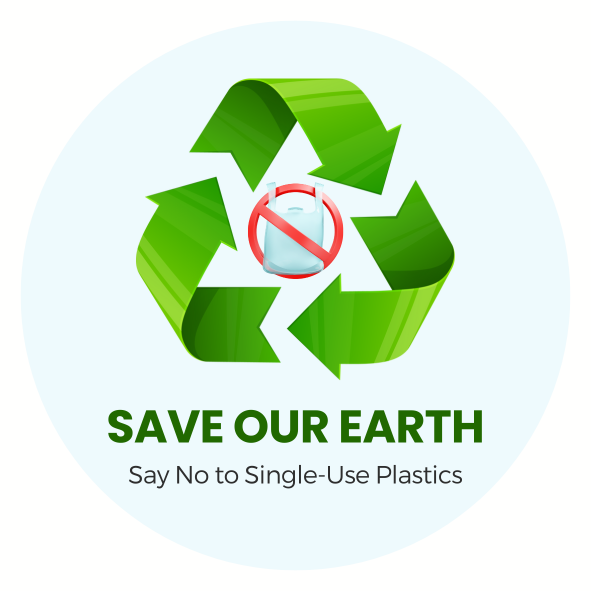Plastic, once celebrated for its versatility, now poses a serious threat to wildlife and the environment. Its extensive use has resulted in severe consequences, especially for ecosystems and species globally. In this article, we’ll discuss the serious impact of unchecked plastic pollution on wildlife and offer practical solutions to reduce its harm.
What Makes Plastics Harmful and Damaging to Wildlife and the Environment?
Plastics, while convenient in our daily lives, harbor numerous harmful elements that pose serious risks to the environment and wildlife.
- Non-Biodegradability: Most plastics are not biodegradable, meaning they persist in the environment for hundreds to thousands of years, accumulating in landfills, oceans, and natural habitats.
- Microplastics: Plastic items gradually break down into tiny particles known as microplastics, which are less than five millimeters in size. These microplastics can be ingested by wildlife, leading to internal injuries, digestive blockages, and contamination of the food chain.
- Chemical Leaching: Many plastics contain harmful chemicals such as bisphenol A (BPA) and phthalates, which can leach into the environment and water sources, posing health risks to both wildlife and humans.
- Entanglement: Discarded plastic items such as fishing nets, ropes, and packaging materials can entangle marine animals, birds, and terrestrial wildlife, causing injury, suffocation, and death.
- Habitat Destruction: Plastic pollution can alter natural habitats and ecosystems, disrupting breeding grounds, nesting sites, and feeding areas for wildlife. This habitat destruction can have far-reaching consequences for entire species and ecosystems.
How is Plastic Pollution Devastating Marine Life and Ecosystems?
Imagine a sea turtle entangled in discarded plastic netting, struggling to free itself as it gasps for air. Picture a seabird regurgitating a stomach full of plastic debris, mistaking it for food. These distressing scenes have become all too common as plastic pollution infiltrates even the most remote habitats. Wildlife, both on land and in water, are falling victim to our plastic addiction at an alarming rate.
Marine creatures are particularly vulnerable, with an estimated 100,000 marine mammals and millions of seabirds dying each year due to ingestion or entanglement in plastic waste. Microplastics, tiny fragments less than five millimeters in size, pose an additional threat, infiltrating the food chain and accumulating in the tissues of animals, with potentially catastrophic consequences for entire ecosystems.
Government Initiatives and Organizational Efforts:
Recognizing the urgency of the situation, governments and organizations worldwide have begun to take action to address plastic pollution. In India, initiatives such as the National Mission for Clean Ganga (Namami Gange) aim to rejuvenate and clean the Ganges River, a lifeline for millions, by implementing strategies to reduce plastic waste and promote sustainable practices.
Additionally, numerous non-governmental organizations (NGOs) and environmental groups are spearheading campaigns to raise awareness about the dangers of plastic pollution and implement community-based solutions. From beach cleanups to advocacy for plastic bans, these grassroots efforts are instrumental in combating the plastic crisis at the local level.
Individual Responsibility:
While government and organizational initiatives play a crucial role, individuals also have a responsibility to curb their own plastic consumption and minimize their environmental footprint. Every small action, from refusing single-use plastic items to opting for reusable alternatives, contributes to the larger effort to combat plastic pollution.
Here are some practical steps individuals can take to reduce plastic usage in their daily lives:
- Say no to single-use plastics such as plastic bags, straws, and bottles. Instead, carry reusable alternatives like cloth bags, metal straws, and refillable water bottles.
- Choose products with minimal or biodegradable packaging whenever possible.
- Participate in community clean-up events and support organizations working towards plastic waste reduction.
- Educate others about the importance of reducing plastic consumption and encourage sustainable practices in your community.
Are there any success stories or case studies of communities successfully reducing plastic waste?
There are several inspiring success stories and case studies of communities around the world successfully reducing plastic waste through innovative initiatives and collective action.
- San Francisco, United States: San Francisco became the first major city in the United States to ban single-use plastic bags in 2007. This initiative significantly reduced plastic bag usage and prompted other cities and states to follow suit. The city has since implemented comprehensive recycling and composting programs, further reducing overall waste generation.
- Himachal Pradesh, India: The state of Himachal Pradesh in India banned the use of single-use plastics in 2019, including items such as plastic bags, straws, and cutlery. This bold step has helped to reduce plastic pollution in the region and promote the use of eco-friendly alternatives.
- Plastic-Free Isles of Scilly, United Kingdom: The Isles of Scilly, an archipelago off the southwest coast of England, launched a campaign to become plastic-free in 2017. Through community engagement and collaboration with businesses, the islands have made significant progress in reducing plastic waste, with initiatives such as refill schemes, reusable packaging, and beach clean-ups.
- Costa Rica: Costa Rica has implemented ambitious policies to reduce plastic pollution, including a national ban on single-use plastics in government institutions and a plan to become carbon neutral by 2021. These efforts have positioned Costa Rica as a leader in environmental sustainability in the region.
- Bhutan: Bhutan, known for its commitment to environmental conservation and Gross National Happiness index, implemented a ban on the sale of tobacco and plastic bags in 2019. The government also promotes the use of biodegradable alternatives and encourages citizens to adopt eco-friendly practices.
- Plastic-Free Communities in New Zealand: Several communities in New Zealand have taken proactive measures to reduce plastic waste and become plastic-free. For example, the town of Raglan launched a successful campaign to eliminate single-use plastics from local businesses, while the city of Wellington has introduced initiatives to encourage reusable shopping bags and containers.
By learning from these examples and taking collective action, communities worldwide can make significant strides towards a cleaner and healthier environment.
Epilogue
Unchecked plastic pollution poses a grave threat to wildlife and ecosystems around the world. From marine animals suffocating on discarded plastic to birds ingesting toxic microplastics, the impact of our plastic addiction is far-reaching and devastating. However, by taking proactive steps to reduce our plastic usage and supporting government and organizational efforts to combat pollution, we can work towards a cleaner, healthier planet for future generations. Remember, every action counts in the fight against plastic pollution – together, we can make a difference.

